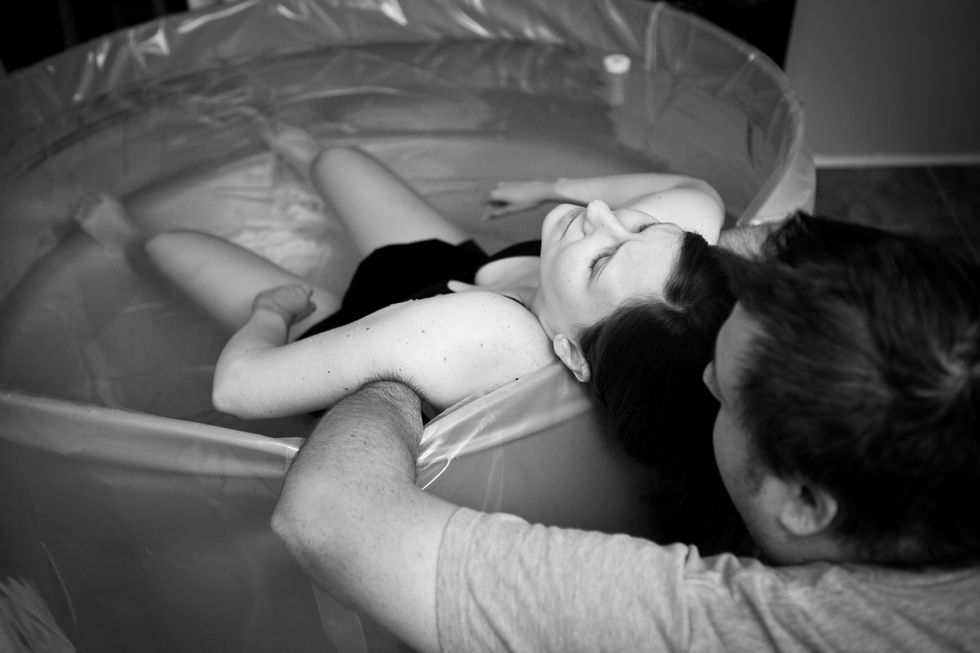
iStock.com/ideabug
Newborns May Get Legionnaire’s Disease From Home Water Birth
Two cases in Arizona and one in Texas highlight a little-known danger of "water births" at home.
Jun 10, 2017
Mar 29, 2023
Pregnancy & Postpartum
Learn about our editorial policies

THURSDAY, June 8, 2017 (HealthDay News)—Two cases in Arizona and one in Texas highlight a little-known danger of "water births" at home—infant infections with Legionnaire's disease.
"The risk for Legionella [bacteria] cannot be eliminated because of the need for warm tap water to fill the tub" used for these births, says a team led by Geoffrey Granseth. He's an epidemiologist with the Arizona Department of Health Services.
According to the U.S. Centers for Disease Control and Prevention, Legionnaires' disease is a serious lung infection that causes pneumonia. People can get it by breathing in small droplets of water containing the Legionella bacteria.
The bacteria can thrive in building water systems that are not adequately managed and where disinfectant levels are low, water is stagnant, or water temperatures are warm, the agency noted.
The new report finds that Legionella can also lurk in tubs used when mothers-to-be decide on a "water birth" at home.
Granseth's team describes two cases occurring in Arizona in 2016. In the first case, an infant arrived at a hospital ER with "severe respiratory distress" a day after a home water birth on Jan. 6. Infection with Legionella wasn't originally suspected, and the baby's case was complicated by the presence of a congenital heart disease.
The baby was transferred to a children's hospital where tests revealed Legionnaire's disease. A 10-day course of antibiotics eventually cleared up the respiratory illness, the researchers said.
In the second case, a newborn was brought to a hospital ER on April 9 with a high fever, four days after being delivered in a home water birth. By April 12, tests revealed the presence of the Legionnaire's bacterium and a 10-day course of antibiotics was begun, after which the baby recovered enough for hospital discharge on April 16.
In both Arizona cases, the home water births were supervised by a midwife. In the first case, the birth was conducted in "a newly purchased birthing tub that had been cleaned with vinegar and water before being filled with municipal tap water," using a new hose, immediately before the delivery, Granseth's team reported.
Even though the tub was filled immediately before the delivery, "tap water is not sterile," the report's authors noted, "and Legionella can grow and spread in man-made water systems, such as plumbing systems."
In the second case, the home water birth took place in a rented, jetted Jacuzzi hot tub that was filled with warm (98 degrees Fahrenheit) water that was then allowed to sit for a week prior to the delivery. Granseth's team noted that that water temperature was "within the optimum range for Legionella growth."
Follow-up research revealed a similar case had occurred in Texas in 2014, and based on that case, Texas in 2016 "developed educational resources and guidelines" on safely managing home water births, Granseth's team noted.
The bottom line, the study authors said, is that people who plan a water birth need to educate themselves beforehand about the potential dangers and "maximize the safety for women [and their babies]."
Even though the risk for Legionnaires can never be reduced to zero during a home water birth, "it can be reduced by running hot water through the hose for 3 minutes before filling the tub to clear the hose and pipes of stagnant water and sediment," the researchers said.
The study appears in the June 9 issue of the CDC journal Morbidity and Mortality Weekly Report.
SOURCE: June 9, 2017, Morbidity and Mortality Weekly Report
Copyright © 2017 HealthDay. All rights reserved.